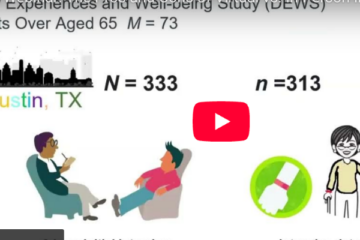
Why Concentrated Poverty Fell in the United States in the 1990s
(August 2005) Concentrated poverty—often defined as the number of people living in neighborhoods with poverty rates exceeding 40 percent—fell substantially in the United States in the 1990s, according to a new report by the U.S. Census Bureau.1 In 1999, about 2.8 percent of the U.S. population lived in neighborhoods with concentrated poverty, down from 4.6 percent in 1989. Meanwhile, the number of people living in tracts with less than 20 percent in poverty increased over the decade, from 78.2 percent to 81.5 percent.2
Does this decline in concentrated poverty rates signal a structural change in poverty distribution in the United States, or does it merely reflect the improved U.S. economy of the 1990s? To answer this question, we need first to outline the history of poverty concentration in the United States and the factors that doubled the number of people living in poor U.S. neighborhoods during the 1970s and 1980s. At least one of the factors that contributed to that trend—suburbanization—also likely played a role in its reversal during the following decade.
The Spatial Concentration of U.S. Poverty
The number of people living in high–poverty neighborhoods is significant because many urban problems such as crime, unemployment, welfare dependency, drug use, substandard educational outcomes, and out–of–wedlock births are most prevalent in high–poverty areas.3 People in high–poverty neighborhoods are also more likely than others to live in female–householder families, have lower family incomes, and not own their own house. In essence, poor people living in these neighborhoods are often both spatially and socially isolated from mainstream society. Their families must therefore cope not only with their own poverty, but also with the poverty and its accompanying problems of hundreds of other families near them.4
However, the spatial concentration of poverty in American cities is a relatively recent phenomenon.5 Social historians who have reconstructed 19th–century U.S. urban neighborhoods have shown that, with some exceptions in large cities, the poor were generally clustered into pockets and alleyways near the homes of the affluent.6 Class and racial segregation began increasing by 1920 with improvements in transportation and the rise of the automobile industry, which made the suburban lifestyle more accessible. After World War II, suburbanization surged dramatically; early suburban migrants were overwhelming white and middle class.
But it was not until the 1960s and 1970s when many commentators began noting sharp increases in concentrated poverty. And researcher Paul Jargowsky (who is widely regarded as having done the most research into the patterns of concentrated poverty) notes that the number of people living in high–poverty neighborhoods nearly doubled from 1970 to 1990, from a little over 4 million to 8 million people. Nearly one–half of the people living in these poverty areas in 1990 were themselves poor, though only 15 percent of the total poverty population lived in such neighborhoods.7
The rise in concentrated poverty in the 20th century resulted from several factors:
- Some federal housing policies, such as the building of low–income projects in already poor inner–city neighborhoods in the post–World War II period, contributed to poverty concentration. Federal assistance to highway construction also accelerated the suburbanization of the middle and upper class.8
- The elimination of low–skill manufacturing jobs and the deconcentration of employment from central cities to surrounding suburbs increased concentrated poverty in those cities—a “spatial mismatch” between workers and employment opportunities.9
- Similarly, the emergence of the service economy resulted in the lack of good–paying job opportunities to match the skills of inner–city residents—a “skills mismatch” whose impact may have been greater among African Americans, who were overrepresented in manufacturing jobs and more likely to live in inner cities.10
- Real estate brokers, speculators, developers, banks, and local governments—acting on racial animosity within the population—preserved racial divisions in housing markets by steering members of different racial and ethnic groups to different neighborhoods, denying loans on the basis of race, and passing ordinances establishing separate neighborhoods for whites and blacks.11
- Others have argued that welfare policy and changes in norms contributed to concentrated poverty during the period by making some people less self–reliant and providing positive incentives for out–of–wedlock births and female–headed households.12
Which of these factors are the most salient for understanding patterns of concentrated poverty from 1970 to 1990? In his book Poverty and Place, Jargowsky concluded that economic opportunities were the most important factor determining these patterns, and that neighborhood sorting processes—such as residential segregation and the growing economic segregation among African Americans—also played important roles.13
A Good Economy and Suburbanization Help, But Pockets of Poverty Remain
The recent Census Bureau report follows a 2003 report by Jargowsky that first documented the dramatic new trends in poverty concentration in the 1990s. Jargowsky’s research indicated that the number of people living in high poverty neighborhoods declined by 25 percent in the 1990s, with the steepest declines among African Americans. He found that about 19 percent of poor African Americans lived in high–poverty areas in 2000, down from 30 percent in 1990. Declines in concentrated poverty occurred primarily in central cities and rural areas; the suburbs experienced little change in the 1990s.14
These declines, particularly among African Americans, illustrate the importance of economic processes. After a recession in the early 1990s, the overall U.S. poverty rate fell from a high of 15.1 percent in 1993 to 11.3 percent in 2000. Over the same period, the poverty rate among African–Americans fell from 33.1 percent to an all–time low of 22.5 percent.15 These trends likely prompted declines in concentrated poverty just by making poverty as a whole less prevalent.
Increasing suburbanization among minorities of all income levels in the last couple of decades also helps explain why declines in concentrated poverty in inner cities were accompanied by little change in concentrated poverty in the suburbs. 16 For example, racial and ethnic minorities made up more than one–quarter (27 percent) of the suburban population in the 100 largest metropolitan areas in 2000, up from 19 percent in 1990. Minorities were also responsible for most of the suburban population growth in these metropolitan areas over that period.17 In addition, suburbs have also become economically more diverse since 1980.18 The implication of these trends is that, had it not been for the strong economy and declining poverty rates for all groups in the 1990s, the decade may have seen increasing poverty concentration in the suburbs.
Despite declines in concentrated poverty in the 1990s, traditionally disadvantaged groups such as African Americans, Hispanics, American Indians, children, and people with less than a high school degree were among those still over–represented in high–poverty neighborhoods, according to the Census Bureau report.
Based on current patterns of suburbanization and overall long–run declines in poverty among African Americans, it is unlikely that concentrated poverty will increase in inner cities in the coming years. It is quite possible, however, that some suburban areas may experience growing poverty: Both low–income residents and immigrants are increasingly moving to the suburbs rather than settling in central cities.
In addition, as Jargowsky has observed, Hispanics will likely represent a larger share of those living in high poverty areas because of the overall rapid growth of this group. Finally, a sharp economic recession could potentially increase poverty concentration for all groups.
John Iceland is an associate professor of sociology at the University of Maryland–College Park and is also a faculty associate of the Maryland Population Research Center. He was chief of the Poverty and Health Statistics Branch at the U.S. Census Bureau until 2003.
References
- Alemayehu Bishaw, Areas with Concentrated Poverty: 1999, U.S. Census Bureau, Census 2000 Special Reports, #CENSR–16 (Washington, DC: U.S. Government Printing Office, 2005). This new report provides state–by–state level detail and information on the socioeconomic and demographic composition of those living in concentrated poverty—not only by race and ethnicity, but also by education, age, marital status, unemployment status, family size, type of family, residential mobility, family income, and home ownership.
- The Census Bureau report presents information neighborhoods with poverty rates from: 0.0 to 12.3 percent, 12.4 to 19.9 percent, 20.0 to 39.9 percent, and 40.0 percent or higher. Tracts with a poverty rate of 20 percent or higher are referred to in the report as “poverty areas.”
- Paul Jargowsky, Poverty and Place: Ghettos, Barrios, and the American City (New York: Russell Sage Foundation, 1997).
- Jargowsky, Poverty and Place; and William Julius Wilson, The Truly Disadvantaged: The Inner City, the Underclass, and Public Policy (Chicago: University of Chicago Press, 1987).
- John Iceland, Poverty in America (Berkeley, CA: University of California Press, 2003): 52–9.
- Thomas J. Sugrue, “The Structure of Urban Poverty: The Reorganization of Space and Work in Three Periods of American History,” in The “Underclass” Debate: Views from History, ed. Michael B. Katz (Princeton: Princeton University Press, 1993): 92–3.
- Jargowsky, Poverty and Place: 38–43.
- Michael G.H. McGeary, “Ghetto Poverty and Federal Policies and Programs,” in Inner–City Poverty in the United States, eds. Laurence Lynn, Jr. and Michael McGeary (Washington, DC: National Academies Press, 1990).
- John F. Kain, “Housing Segregation, Negro Employment, and Metropolitan Decentralization,” Quarterly Journal of Economics 82, no. 2 (1968): 175–97.
- For more on skills mismatches, see Harry J. Holzer, “The Spatial Mismatch Hypothesis: What Has the Evidence Shown?” Urban Studies 28, no. 1 (1991): 105–22; John Kasarda, “Structural Factors Affecting the Location and Timing of Underclass Growth,” Urban Geography 11, no. 3 (1990), 234–64; and Wilson, The Truly Disadvantaged.
- Douglas S. Massey and Nancy Denton, American Apartheid (Cambridge, MA: Harvard University Press, 1993).
- Two influential proponents of this view are Charles Murray, Losing Ground: American Social Policy, 1950–1980 (New York: Basic Books, 1984); and Lawrence Mead, The New Politics of Poverty: The Nonworking Poor in America (New York: Basic Books, 1992).
- Jargowsky, Poverty and Place: 183.
- Paul Jargowsky, Stunning Progress, Hidden Problems: The Dramatic Decline of Concentrated Poverty in the 1990s (Washington, DC: Brookings Institution, 2003): 1.
- Joseph Dalaker, Poverty in the United States: 2000, U.S. Census Bureau, Current Population Reports, Series P60–214 (2001): 18-20.
- William H. Frey, Melting Pot Suburbs: A Census 2000 Study of Suburban Diversity (Washington, DC: Brookings Institution, 2001).
- Frey, Melting Pot Suburbs.
- Todd Swanstrom, Economic Segregation among Suburbs and Central Cities in Major Metropolitan Areas (Washington, DC: Brookings Institution, October 2004).






